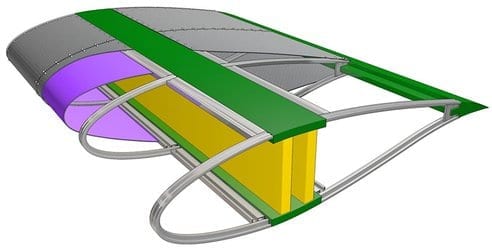WHEN Superstorm Sandy roared ashore in late October and the lights of lower Manhattan went out, New Yorkers were given a stark vision of a possible future.
Climate-change science is still a realm of great uncertainty but there is consensus that the planet is warming dangerously and that people are to blame. A recent report commissioned by the World Bank warned that the world is on track to have a global mean temperature that is 4°C above pre-industrial levels by 2100. If so, sea levels could rise by between half a metre and a metre by the end of the century, threatening hundreds of millions of people in coastal cities. Other regions would face the threats of droughts, bigger storms and changing rainfall patterns. That entails not just human costs but economic ones, too.
The question that preoccupies Klaus Desmet of the Universidad Carlos III in Madrid and Esteban Rossi-Hansberg of Princeton University in a new NBER working paper* is whether there are ways to manage the impact of changing weather patterns by moving the location of economic activity. They note that roughly 90% of global production uses just 10% of available land. If that 10% is threatened, activity may at least theoretically shift to bits of the 90% made more hospitable by climate change.
Messrs Desmet and Rossi-Hansberg build a model economy, and then batter it with different temperature increases to see how it reacts. In their benchmark analysis, they allow people to move around as they like in response to these changes. In extreme scenarios freedom of movement doesn’t make much difference: temperatures reduce global agricultural productivity to near zero, “implying the end of human life on Earth”. But in more moderate scenarios, rising global temperatures improve agricultural productivity in northerly climes. Welfare losses are small because there are big movements of people northward. A relatively small temperature increase (by the model’s standards), of 2°C at the Equator rising to 6°C at the North Pole, causes a shift in the average locations of agricultural and manufacturing activity of about ten degrees of latitude by the end of this century—roughly the distance between Dallas and Chicago, or Frankfurt and Oslo.
Restrictions on movement dramatically increase welfare costs, however. The authors modify the model by introducing a rigid border at the 45th parallel, which runs through the northern United States and across southern Europe, with roughly 1 billion people living above the line and 6 billion below. The model finds that rising temperatures actually benefit the northern section of the globe. Agricultural productivity grows and northern manufacturers enjoy more trade with the throngs that mass just south of the border. Welfare in the south falls, by contrast, by about 5% on average relative to the no-warming case. The model is simplistic, of course, but it suggests that limits on migration have a big effect on the costs of global warming.
Unfettered migration is obviously a lot more likely within countries. But even then, wouldn’t it matter if people left a really productive place for somewhere less dynamic? Real output per person in the New York area is some 70% higher than in Buffalo, for instance; a New Yorker fleeing upstate may suffer a large income loss. Matthew Kahn of the University of California, Los Angeles, reckons that this, too, is manageable. In his book “Climatopolis”, Mr Kahn points out that the productivity of rich places often has little to do with unique geographical advantages. Instead, cities profit as magnets for skilled workers attracted by other skilled workers. New York’s financial wealth stems not from its port but from its brimming community of firms and workers.
via The Economist









